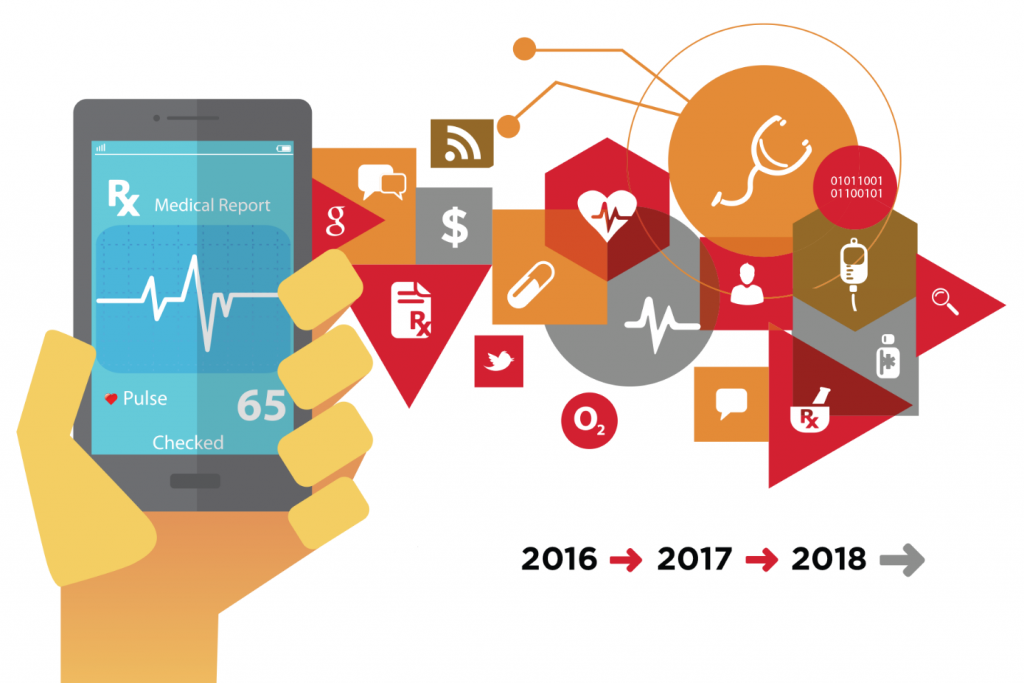
The term “consumer” is most commonly associated with the retail, hospitality, or entertainment industries. In terms of customer satisfaction, consumers are simply looking to be listened to, treated with respect, and communicated with in a way that they can understand.
Healthcare can be considered the largest consumer-facing industry, with the patient experience taking center stage in how a facility is perceived from the consumer viewpoint. Providers must find the right balance between “giving the people what they want” and what is actually good or medically recommended for a patient, while also properly opening up the lines of communication between patients and their caregivers.
There is a growing patient expectation for physicians and facilities to utilize accessible digital tools to provide more efficient care. Each generation is more technologically-savvy than the last, and although millennials have led the charge in terms of tech adoption, recent analysis has seen an upward swing in older generations embracing the digital age as well – particularly as their health needs continue to increase with age.
In 2018, 67% of Baby Boomers (the generation born between 1946-64) said they owned a smartphone, as opposed to only 25% back in 2011. Tablet and social media usage also increased over this period to over 50% in each category.
Rising tech use is not only limited to hitting the Like button on Facebook posts. The use of fitness measurement and health monitoring tools (websites, apps, wearables, etc) jumped from 17 percent in 2013 to 42 percent in 2018.
Consumer-Friendly Healthcare
Enabled by expanding technology, previously passive patients of all ages have evolved into active participants in their care. These consumers want faster and frictionless experiences both inside and outside of facility walls, with high expectations of simplified tech interactions due to the growing popularity of online banking, shopping, and flight-booking.
Engaging these patients using easy-to-use platforms is key in maximizing retention rates in an increasingly customer-focused world. The pure convenience of being able to schedule an appointment through an online portal or application cannot be ignored and is considered paramount in producing a seamless patient experience from beginning to end. In turn, the consumerization of healthcare not only aids patients on their own medical journey, but also gives providers the opportunity to improve efficiency in their practice.
Brand Loyalty
Technology is not the only area spotlighted by rising patient expectation of care facilities. Overall service has a heightened consequence regarding the return of a patient, just as customers at a restaurant or retail store can become repeat visitors or “regulars” based solely on a positive experience provided by the staff or store.
There are some basic generational differences in this “brand loyalty”, whether to a specific provider or an overall facility. In particular, younger generations are more likely to jump from provider to provider if they feel their care needs are not being met technologically or via the human touch.
Regardless of age, building better relationships with patients is not only good for business and retention rates, but is also good for a patient’s overall health.
Patient Empowerment
While patients may not have the same educational background or experience regarding healthcare as their caregivers, they do have the power to track their own data and make decisions regarding which provider will join them on their medical journey.
The use of a patient engagement platform like CarePassport could give providers an edge over their competition. Facilities that provide a secure platform integrated with their EMR not only allow easier access for patients to collect their medical data, but help enable an all-encompassing bilateral exchange of information, including images and wearable device data.
Patients can enjoy a more consumer-friendly experience with the assistance of CarePassport, becoming engaged and empowered with abilities to book appointments, check-in virtually, sign paperwork, and communicate directly with their providers, even when they are beyond the facility’s walls.
As for any last few tech holdouts without a smartphone to download CarePassport (onto iOS or Android devices) – patients can still access all the same tools and information via web browser, or can even act as a proxy for a family member.
But make sure they’ve asked Grandma if she actually wants her own smartphone first – they may be surprised at the answer!
Written by Stephanie Girard








